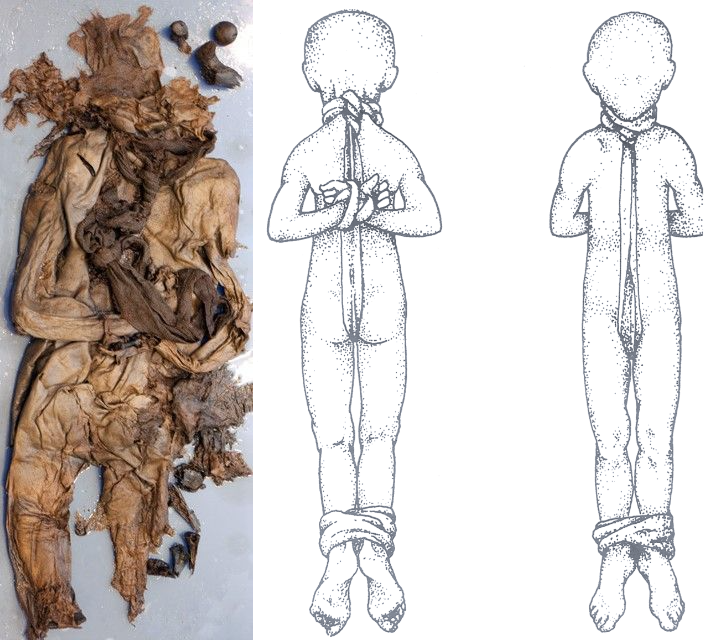In 1922, the remains of a young boy were discovered in a German bog near Kayhausen, providing an eerie yet fascinating window into Iron Age Europe. Known today as the Kayhausen Boy, this tragic figure has intrigued archaeologists and historians alike for over a century. Dated to approximately 300–400 BCE, his remains tell a chilling story of violence and mystery.
The Discovery
The bogs of northern Europe have long been a treasure trove of archaeological finds. Known for their preservative properties, they yield remarkably well-preserved bodies, often referred to as "bog bodies." The Kayhausen Boy was one such discovery. His small frame was unearthed with his arms and feet bound by cloth—an unsettling detail that hinted at deliberate restraint. Even more hauntingly, forensic analysis revealed that he had been stabbed multiple times: three fatal wounds to his neck and one defensive wound on his left arm.
The violence inflicted upon this seven-year-old raises profound questions. Was his death a result of ritual sacrifice, a punishment, or a random act of violence?
Ritual or Retribution? Interpreting the Evidence
The Case for Ritual Sacrifice
In Iron Age Europe, bogs were considered sacred spaces, often linked to deities or spirits of nature. Numerous other bog bodies show signs of ritualistic killings, suggesting that the Kayhausen Boy might have been a sacrificial offering. His bound limbs could indicate ceremonial preparation, and the precise manner of his death—stab wounds to the neck—might have been a symbolic act intended to honor or appease the gods.
Furthermore, children were sometimes sacrificed in ancient cultures during times of crisis, such as famine, war, or environmental disaster. Could the Kayhausen Boy’s death have been part of such a ritual?
The Case for Punishment or Violence
Alternatively, the Kayhausen Boy could have been the victim of social punishment or interpersonal violence. In some ancient societies, binding and execution were methods used to enforce social norms or deal with perceived transgressors. The defensive wound on his arm suggests he may have fought back, hinting at a struggle rather than a peaceful ritual.
Another possibility is that his death was not ritualistic but rather the tragic result of domestic or community conflict. The binding and burial in the bog might have served as a means to conceal the crime.
The Legacy of the Kayhausen Boy
The remains of the Kayhausen Boy remind us of the fragility of life in ancient times and the complex human behaviors that have existed throughout history. Whether he was a sacrificial victim, punished for a misdeed, or caught in the throes of interpersonal violence, his story is a testament to the rich—and often brutal—tapestry of human history.
As archaeologists continue to study his remains and compare them with other bog bodies, we may one day uncover more about his life, his community, and the reasons for his untimely death. Until then, the Kayhausen Boy remains a poignant symbol of the mysteries buried in the earth and the stories they have yet to reveal.
What Do You Think?
Was the Kayhausen Boy a victim of sacred ritual, or did his death stem from the darker aspects of human conflict? Share your thoughts and let’s delve into this ancient mystery together!







